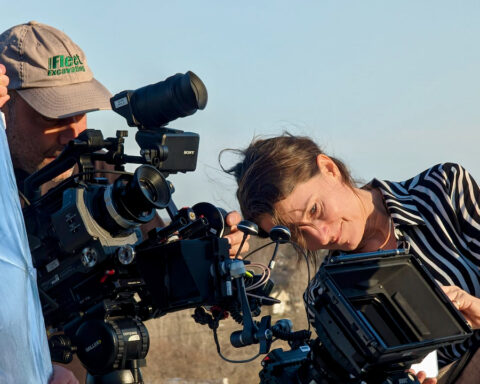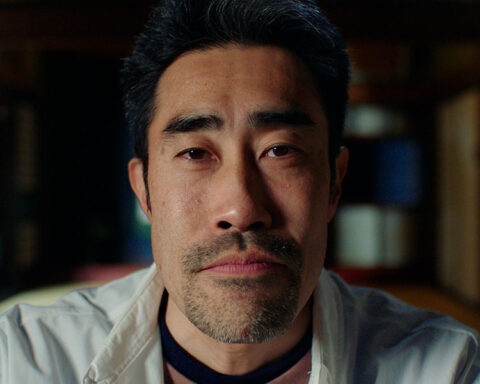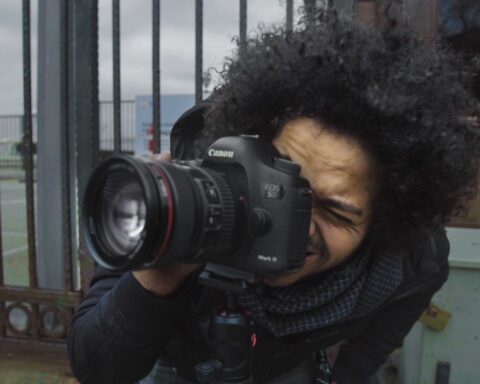Let’s face it; it’s a minefield out there. Ethical issues in documentary filmmaking are constant, endless, subjective and complex often with no simple answer. Moral compass in hand, documentary filmmakers embark intrepidly on our individual soul-searching journey every time we make a film. Social workers, medical practitioners, real estate agents, engineers, architects: all have standards of practice and codes of ethics. There’s even talk that reality television is considering whether they should have one, given the recent suicide of a participant from one of their shows. So why not create a map for ourselves to guide us on our journey through the minefield of documentary filmmaking?
Time was, the documentary filmmaker would bear the “truth” or “real-ness” of their work like a badge of honour. It was the objective set out in Jean Rouch and Edgar Morin’s Chronicle of a Summer, and so it remained for decades. Think of classics like the Maysles brothers’ Grey Gardens, Barbara Kopple’s American Dream or Errol Morris’s The Thin Blue Line. All real stories about real people. It used to be so simple and straightforward. Nowadays we inhabit a darker, more obscure world. Things are not always what they seem; there are outside and inside forces increasingly influencing the ethical parameters of our profession.
The canary in the mine shaft might well be Joe Berlinger’s nightmarish encounter with Chevron over the footage from his film Crude. Berlinger followed a path familiar to many filmmakers. Someone suggested a story (Steven Donziger, one of the plaintiffs’ lawyers in the original Lago Agrio lawsuit against Texaco/Chevron, which Crude follows) and after Berlinger thought about it, he decided it would make a good documentary (with great access).
After its premiere screening at Sundance, Berlinger made a directorial decision to replace one shot in the final cut. It was a scene that raised questions around impartiality because it showed the plaintiffs in the Lago Agrio lawsuit meeting with physician and psychologist Carlos Beristain prior to his being appointed by the Ecuadorean court as an independent expert. This was one of many suggested changes that came his way and the one Berlinger decided to carry out. It’s something widely considered to be the director’s prerogative. But it’s true that the lawyers for the plaintiffs did make the editorial suggestion to Berlinger.
Soon afterward, Berlinger found himself facing a huge legal case in which he had to defend himself against Chevron.
Not to diminish the intimidation factor and huge financial burden attached to fighting a lawsuit against the third largest U.S. corporation and eventually being forced to turn over the 500 hours (originally 600 hours) of unedited footage from the Crude archives, what lies at the heart of Berlinger’s landmark court case are the issues of trust and representation in the director-subject relationship.
It was exactly the privileged relationship between journalist and source that Berlinger tried to invoke to fend off Chevron’s bid for access to all his footage. But in their ruling earlier this year, the judges decided that Berlinger had failed to demonstrate “…that he had gathered the information for the purpose of independent reporting and commentary” (pg. 4, Case 10-1918 Document 304-1, United States Court of Appeals).
Why? Because he had been solicited by the Lago Agrio plaintiffs with the idea in the first place, and because he had responded to a comment the plaintiffs’ lawyers from the case had made subsequent to viewing the final cut. In the eyes of the court, this removed the film from the realm of journalistic practices and made it a commissioned work.
If there is some light to be found at the end of this very dark tunnel it came immediately following the January 13th ruling from the International Documentary Association’s board president, Eddie Schmidt, when he announced that his organization is working toward a federal shield law to properly include documentary filmmakers within the wide definition of journalists. He went on to say, “It appears there’s a fundamental misunderstanding of the process in our work, and just as we expect truth from our news sources, our news sources require the building of trust.”
Perhaps therein lies the rub: “…a fundamental misunderstanding of the process in our work…” True, what documentary filmmakers do is not dissimilar to what any reporter, writer, online contributor or journalist does. But it’s what makes us different that requires a clear definition in order that the rest of the world (and courts of law) are able to understand the very tenuous and vulnerable place doc-makers go to with our subjects every time we make a film and the absolute necessity to protect this place.
We need to be able to promise our film’s subjects that what they tell us will be treated with the utmost respect and consideration for their safety and, most importantly, that their footage will not be made available to any other parties who may or may not have their best interests at heart.
Muddying the waters further is what is euphemistically called “genre creep,” and the undertow of this huge unstoppable wave is reality television. We live in a universe where millions of television viewers tune in regularly to watch people eat worms and humiliate each other. To have any chance of competing, our docs need to be (you choose) one of the following: “groundbreaking,” “controversial” or “sensational.” There is an ever-increasing onus to entertain (or shock) in the guise of informing our audience. For the sake of survival, many of us find ourselves directing productions that are either increasingly invasive or manipulative.
As filmmakers, we are always looking for that emotional hook to engage our audience. So the question becomes: how far are we willing to go in order to achieve that emotional engagement, and at what point does it become unmitigated emotional manipulation? A case in point is Davis Guggenheim’s Waiting for Superman, which received a lengthy critique in an article by Sharon Otterman in the November 2, 2010, edition of the New York Times. I love the fact that this venerable publication makes such a concerted effort to offer in-depth analysis of documentary film (to wit, the series by Errol Morris, Seven Lies About Lying). But after viewing Waiting for Superman, which is a very disturbing and beautifully shot documentary about the broken public-education system in the U.S. (Canada ranks one place ahead of it), I’m a bit flummoxed about the fuss.
About halfway through the film we see Maria, mother of Francisco, visiting the Harlem Success Academy, where, according to the storyline, she hopes her son will be selected by lottery to attend. The New York Times article revealed the truth, that this scene was actually shot after Maria knew that Francisco was not selected and not before, as is shown in the film. How this fact became public is a good question. The transgression about which Otterman queries Guggenheim is why the footage was shot and used out of sync with the true chronology of Maria’s story.
What I found interesting were the reactions solicited by Otterman—one from Pat Aufderheide, director of the Center for Social Media at American University, and the other from the documentary company Kartemquin’s artistic director, Gordon Quinn—two figures in the documentary world who I, along with many others, hold in high regard. Aufderheide’s reaction was a very academic one: that documentary filmmakers typically believe that it is only when altering chronology “fundamentally alters the interpretation of what happened” that ethical questions arise. Quinn’s response was that of a veteran film director and producer. He was interested that Guggenheim had not pursued another, more honest emotional context: that Maria could have been showing her disappointment about Francisco not being selected instead of raising the false hope that he might be chosen.
Of course, both Aufderheide and Quinn make good points, and this is where discussions about ethical practices in documentary can get very extensive, convoluted and inconclusive. I’ve discovered from talking with and interviewing many directors that it’s astonishing how widely they differ in their sense of “right” and “wrong” when making ethical choices in their filmmaking. At one end of the spectrum there are those who think that it’s a question of deciding what’s best for the film, and at the other it’s about never making decisions that will harm their subject’s life. Is this our excuse for never collectively going down that road to sort out our own standards and codes—it’s just too subjective and messy?
I’ve been working in documentary for 20 years thinking what we do is all about filmmaker integrity. It is what distinguishes a disingenuous, exploitative film from an honest but balanced portrayal of our subject.
With documentary funding in greater jeopardy than ever, the need for financing puts documentarians in an even more vulnerable place. This goes for not only how we shape and focus our films but also for what funding sources we pursue.
Sponsorship and documentary filmmaking have been around for awhile. Take Ken Burns’ endless productions on the many stories within American history. Until recently, all were underwritten or funded in part by General Motors, and they’re still partly funded by the Bank of America. One wonders, if Burns was portraying anything approaching a contentious point of view of American history, would he still enjoy the same support from such big-name sponsors.
Whatever one thinks of the creative aspects of Morgan Spurlock’s Pom Wonderful Presents: The Greatest Movie Ever Sold, it was a smart way to turn the filmmaker/fundraiser relationship on its ear. It blew wide open the whole issue of where sponsorship and filmmaker integrity meet. In it, Spurlock is so completely transparent about product placement that sponsorship and the seeking thereof became the subject of the film. My question is, does doing it so blatantly imbue it with integrity?
And will we all be “sleeping with the enemy” in the future?
I discovered recently that we’re already moving rapidly in the direction dealt with in the film through something called Demand Media. The California-based company is one of the biggest suppliers of content on YouTube—and I thought it was all put up there by a random pool of caring, sharing individuals. Each day it creates thousands of short “factual” video content (i.e., lots of “how tos”) according to logarithms that analyze bulk data from search engines, ISPs and internet marketing firms to figure out what content is most likely to attract online advertisers. According to one source, to make anywhere near a living wage, a filmmaker needs to churn out about 10 of these short videos a day—and it’s a solo gig to boot.
Obviously, as desperate as these times might be for the independent documentary filmmaker, we’re not all rushing to sign up for this kind of assembly-line production. But projecting this trend down the line, what happens if documentary content is increasingly decided by advertisers because that’s the way we can fund our films? Or what if, as is already happening in some countries, the subjects of our films are paid participants? It begs the whole question of when a documentary is really a documentary. Where is the line drawn when it becomes something else?
With the proliferation of hybridization and cross-genre explorations, there’s obviously been a fair amount of creative experimentation in the name of “documentary” going on in recent years. Think of films like Banksy’s Exit Through the Gift Shop or Casey Affleck’s I’m Still Here. In the case of the Banksy film, there is an ongoing debate as to the veracity of the central storyline. By contrast, Affleck’s “documentary” was first shopped around as a “true” story and then rescinded when it became obvious that Joaquin Phoenix’s “retirement from the acting” was just a stunt. Looking at these trends over the long term, I wonder how much genre switching can happen without eroding the public’s trust that when they watch a documentary film, they’re watching something that depicts an essence of “the truth.”
It was Edgar Morin, co-director with Jean Rouch of Chronicle of a Summer, who once mused that fiction film was more honest than documentary because it doesn’t make any attempt to hide its fiction or imaginings by pretending to be a reflection of reality as we do in documentary. As documentary filmmakers, we have inextricably linked ourselves to telling “the truth,” and with that territory comes the responsibility of behaving ethically.
Documentary is increasingly relevant in a transient world as a way to be informed and share common knowledge. It puts documentary filmmakers on the front line of creating and preserving a code of ethics when it comes to media practices. It’s a slippery slope and if we’re not talking amongst ourselves about it, clearly nobody else will. Of course “docutainment” type filmmaking is here to stay, as no doubt are sponsored docs and docs that aren’t really docs. What remains to be seen is where and how we hold that line or if we continue to let it be defined by others and the vagaries of the world of entertainment.











